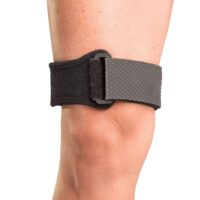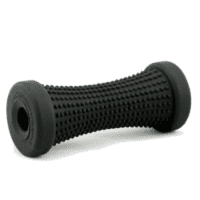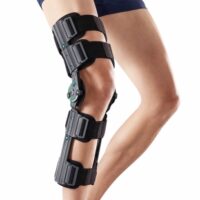Posterolateral Corner Injury
Article by Matthew Batch

Overcoming Posterolateral Corner Injuries: A Comprehensive Guide to Knee Recovery
What is a Posterolateral Corner Injury?
The posterolateral corner (PLC) of the knee, a complex area consisting of various muscles, tendons, and ligaments, plays a critical role in knee stability. Situated at the back and outer side of the knee, the PLC is vital for preventing excessive varus movement (sideways movement away from the other leg) and external rotation of the tibia (shinbone). Injuries to this area, while less common in isolation, often occur alongside cruciate ligament injuries and can significantly impact mobility and quality of life.
Understanding the Causes
Posterolateral corner injuries typically result from sports-related activities, motor vehicle accidents, or falls, with direct impacts, hyperextension, twisting movements, or severe trauma leading to dislocation among the main causes. Recognising these causes is crucial for prevention and early treatment.
Identifying Symptoms
Symptoms of a posterolateral corner injury can vary but generally include acute onset of pain and swelling at the injury site, pain during weight-bearing activities, and a sensation of instability or weakness in the knee. Neurological symptoms such as numbness or weakness in the lower leg and foot may also occur if the peroneal nerve is affected.
Diagnosis: The First Step to Recovery
Diagnosing a posterolateral corner injury involves a thorough examination by a physiotherapist or sports doctor, including palpation and stability tests of the knee. MRI scans may also be utilized to confirm the diagnosis and assess the injury’s severity.

Tailored Management for Optimal Recovery
The approach to managing a posterolateral corner injury varies depending on its severity and the presence of associated injuries. Mild injuries may respond well to physiotherapy, focusing on pain management, restoring range of motion, and strengthening the lower limb muscles. More severe cases may require surgical intervention, followed by a comprehensive rehabilitation program.
Physiotherapy: Foundation of Recovery
Physiotherapy plays a pivotal role in both non-surgical and post-surgical recovery. The goal is to manage pain and swelling, improve muscle activation and strength, normalize muscle lengths, enhance balance, coordination, and power, and ultimately improve knee function for daily activities and sports.
Surgery: When Necessary
Surgery is considered for moderate to severe posterolateral corner injuries, especially when other knee structures are involved. The decision for surgery is based on individual cases, with risks including infection, stiffness, persistent instability, and pain. Post-operative rehabilitation is crucial to regain knee function and return to previous activity levels.
Prevention: Reducing Risk of Injury
Preventing PLC injuries involves correcting biomechanical imbalances, strengthening the muscles of the lower limbs, and employing proper warm-up and cooldown techniques. Attention to exercise frequency and intensity can also prevent sudden strain on the knee.
Returning to Sports: A Goal-Oriented Approach
A successful return to sports after a PLC injury depends on a rigorous rehabilitation program tailored to the individual’s needs. Completing a specialised rehabilitation program is crucial for regaining full function and preventing reinjury.
Conclusion: Seeking Professional Guidance
PLC injuries require a nuanced approach for effective treatment and recovery. Early diagnosis, tailored physiotherapy or surgical intervention, and a focus on prevention can significantly improve outcomes. Consulting with a physiotherapist is essential for anyone experiencing symptoms of a PLC injury, ensuring a personalized and effective recovery plan.
Professional Advice: Your Path to Recovery
For individuals experiencing knee pain or symptoms suggestive of a PLC injury, professional consultation cannot be overstated. A physiotherapist will offer a detailed assessment and craft a recovery plan tailored to your specific needs, guiding you towards a successful recovery and return to your active lifestyle.
Navigating Your Recovery Journey
Recovering from a posterolateral corner injury is a journey that requires patience, dedication, and the right guidance. By understanding the causes, recognizing the symptoms, and following a professionally recommended treatment plan, you can navigate this journey confidently, knowing that a full recovery is within reach. With the support of a physiotherapist, you can overcome the challenges of a PLC injury and return to your favourite activities stronger and more resilient than before.
Rochedale - Call 38410277
Book Online: RochedaleSalisbury - Call 32751044
Book Online: SalisburySandgate - Call 32691122
Book Online: SandgateRelated Articles
- Effective MCL Sprain Treatment And Prevention Tips – Although focusing on the medial collateral ligament (MCL), this article is relevant because MCL injuries can occur in conjunction with PLC injuries. It provides insights into pain management, swelling reduction, and preventive tips.
- Knee Ligament Injury – Physiotherapist Guide & Tips – This comprehensive guide covers various knee ligament injuries, including posterolateral corner injuries. It details symptoms, treatment approaches, and prevention tips for knee ligament injuries.
- ACL Injury Treatments – Given that PLC injuries often occur alongside cruciate ligament injuries, this article on ACL injury treatment options is highly relevant. It discusses surgical and non-surgical treatment methods, offering a broad perspective on knee ligament injuries.





















































































